Randi Zuckerberg's Blog, page 17
July 13, 2016
Radio Recap: Ice Cream with Purpose
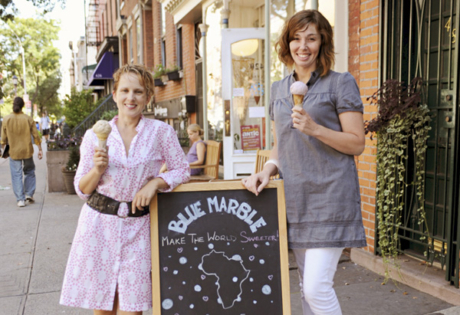
Jennie Dundas (left) and Alexis Gallivan (right), co-founders of Blue Marble
Jennie Dundas and Alexis Gallivan are making the guilty pleasure of ice cream infinitely less guilty with artisanal, organic Blue Marble ice cream that comes with a twofold goal: One, in making yummy food you feel good eating and two, by also inspiring women around the globe to do the same. Today the co-founders joined ‘Dot Complicated with Randi Zuckerberg’ to discuss the process of creating a profitable, ethical, and philanthropic business.
“After the gorilla incident I’ve become much more aware of ethical involvements with animals.”
“I had been itching to make a change in my career. At the time in Brooklyn there was no place to get a scoop of artisanal ice cream.”
“I knew I could never run a business by myself. I knew I needed help.”
 “Another idea I had was to name a business Blue Marble—another nickname for planet Earth.”
“Another idea I had was to name a business Blue Marble—another nickname for planet Earth.”
“When you’re eating our ice cream you are tasting nature, pure and simple.”
“When we had to search high and low for compostable spoons and straws, we had to have them shipped from OR & CA.”
“Now it’s interesting to watch the proliferation of biodegradable flatware and how it’s brought costs down.”
“We’re still working on our distribution, which is growing every day.”
“Social enterprise didn’t exist in 2008-2009 like it does today. We were moved by our own sincere intent.”
“The universe had ideas of its own. It came through the form of a woman from Rwanda named Kiki. She wanted women in her town open up their own business.”
“We were aware of some of the challenges that Africa was facing at the time. Kiki wanted to create jobs. Women were eager to work.”
“Rwanda as the land of milk of honey. There are actually milk bars. Ice cream was virtually unknown though.”
“12 – 15 years after the genocide of Rwanda, survivors are still grieving. What better way to make the community feel whole than through an ice cream that spreads peace, joy, and empowerment.”
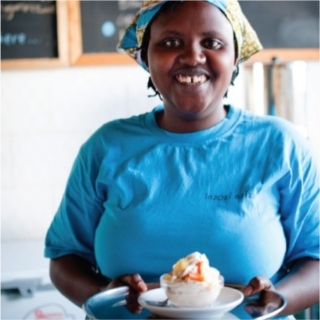 “We didn’t know if ice cream would translate in Rwanda. We were up for the challenge.”
“We didn’t know if ice cream would translate in Rwanda. We were up for the challenge.”
“We were consumed by inspiration.”
“The success we achieved in Rwanda had so much positive impact in the area. We were a catalyst to creating other opportunities.”
“We had an empty nest syndrome and wanted to see if we could replicate what we helped create in Rwanda in Port au Prince Haiti.”
“Genocide and earthquakes are different occurrences but the aftermath is similar. We joined with Haiti155 to build another Sweet Dreams in Port au Prince.”
“We repurposed three shipping containers to create a beautiful ice cream shop for the people in Haiti.”
“Find someone with complimentary strengths. You want to find someone who compliments you as a cohesive whole.”
“It takes a village to start and run a business.”
“Jet Blue has been very supportive of our Haiti shop. They expanded service from New York to Port au Prince.”
“Make sure your business comes from the heart. For us it wasn’t a marketing ploy. We weren’t trying to keep up with the Joneses.”
“I’m a big believer in each to their own.”
“I think we should have ugly fruit on all the shelves. Changing nature to look like it’s not meant to be is ridiculous.”
“Alexis chose an actress to help to her build her company. I was a Broadway actress at 11. I hit my 30s and got bored of it.”
“I like to think my ice cream palette is refined over years and years.”
“It’s one thing to say you’re organic, but to actually achieve organic certification is another.”
“We’re a small business but we’ve gone that actual extra mile.”
 “Alexis had moved to Brooklyn where there was no great place to get ice cream.”
“Alexis had moved to Brooklyn where there was no great place to get ice cream.”
“Brooklyn is a great place to start a business. What you have is these neighborhoods who went without certain amenities for certain amounts of time.”
“We were embraced from the moment we opened in Brooklyn. We owe so much of our success to Brooklyn.”
“We were fortunate to know someone who made ice cream to help us. We had a concept and idea and a palate to hone the flavors. We needed someone to help.
“You start sourcing as close to where you are as possible.”
“As you grow you have to seek more volume. “
“We’re 100% GMO free. No toxins, no additives.”
“Neither Alexis or I had kids at the time. I hung out at a coffee shop on the West Coast that had a kids play area and thought ‘this is awesome.’”
“The slow food movement and locally sourced food helps expand the triple bottom line and is more important to more people.”
“ We love hearing how many people tried our ice cream on Jet Blue. We had a regular customer who was making decisions for them and threw our hat in the ring.”
“We do a special butter pecan flavor. We never know how it’s going to hit but it’s been doing great.”
“You can order our ice cream from FoodyDirect.com. They ship it in as Earth-friendly packaging as possible.”
“Opening a location in Rwanda put a strain on scaling our business in Brooklyn. But we scaled both very quickly.”
“Triple bottom line businesses weren’t as common as they are now. What we were doing that felt different is we were a tiny business. We just opened.”
“We founded a totally separate entity, a 501(3)(c). We were too small a business to donate money from the shop so we did it through the non-profit.”
 “The business and non-profit are 2 but the heart is 1.”
“The business and non-profit are 2 but the heart is 1.”
“We were the subjects of the documentary ‘Sweet Dreams.’”
“We were told by every ex-Pat that we wouldn’t have enough customers, it wouldn’t work. We did what we wanted and it worked!”
“Finding a perfect business partner is like finding a spouse. We got really lucky.”
“It’s a big learning curve to be a mother and an entrepreneur at the same time.”
Join ‘Dot Complicated with Randi Zuckerberg’ next week when she sits down with MIT engineer, Janet Lieberman, and sex therapist, Alexandra Fine, to discuss their company Dame Products. Wednesday at 12pm ET/ 9am PT on Sirius XM Business Channel 111.
July 8, 2016
Using Social Media to Highlight Injustice
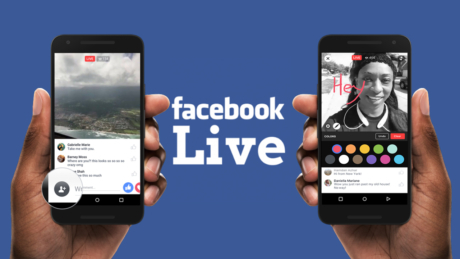
On Wednesday, July 6th, Philando Castile was shot and killed by a Falcon Heights, MN police officer. His girlfriend, Lavish Reynolds, recorded the aftermath of the deadly encounter on Facebook Live to share what happened with the world. Her first words to the public were “Stay with me” then she panned to Philando, bleeding in the passenger seat while Lavish’s 4-year-old daughter was in the backseat of the car the entire time, witnessing this injustice in real time.
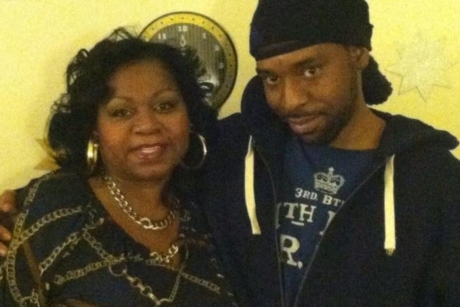
Philando Castile and his mother
The day before, in the southern part of the country, Alton Sterling’s shooting by a white police officer in Baton Rouge, LA was recorded by nearby convenience store owner, and Alton’s friend, Abdullah Muflahi. Arthur Reed, a Black Lives Matter and activist against street violence heard the arrest on a police scanner, also came on the scene to record video. Police asked Abdullah for his footage, which he refused without a warrant but the video was taken anyway. But thanks to Arthur’s video, protesters hit the streets almost immediately.
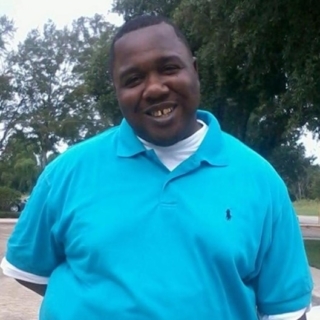
Alton Sterling
In 2014, social media alerted millions to the murder of Michael Brown by a white officer in Ferguson, MO. Cell phone footage showed Michael’s lifeless body lying on the street, setting America off in protest and anger.
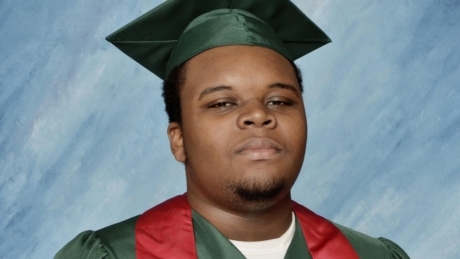
Michael Brown
Eric Garner was strangled by a white police officer in Staten Island, NY. Eric’s death not only spurred the hashtag #ICantBreathe but the disturbing video leading up to his death spread virally through social media, igniting numerous rallies and protests against police brutality toward Black men.
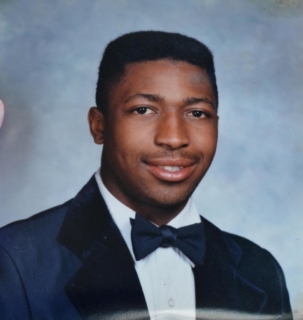
Eric Garner
When Islamic militant group Boko Haram kidnapped 270 girls from Chibok boarding school in northeastern Nigeria, a group of locals started the #BringBackOurGirls campaign. The plea went viral, catching even the attention of Michelle Obama.
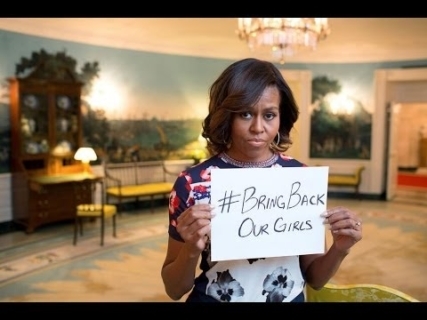
‘Citizen journalism’ has been used—and will continue to be used—to highlight important injustices. Facebook Live and Periscope were even used by Democrats in the House of Representatives to livestream their protest to the lack of movement on gun control legislation.
Social media is a powerful tool. It activates people, it shows the truth, it highlights injustice, and if you have a cell phone you can help too. If you see something, film something. Change is gonna come.
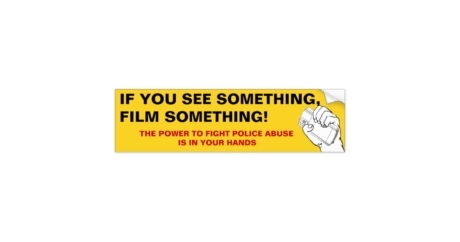
July 6, 2016
Radio Recap: Daymond John
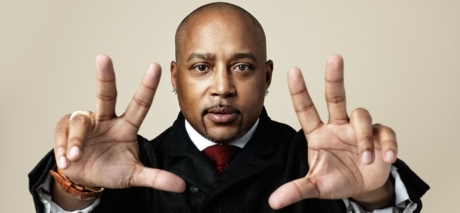
Daymond John is a world-renowned marketing and branding guru. As founder & CEO, Daymond John led his company, FUBU, to over $6 billion in sales and revolutionized the fashion industry in the process. Today, he continues to be revered as one of the greatest branding minds of all time and has parlayed his abilities for branding and marketing into many other opportunities and feats.
From being one of the most highly sought after keynote speakers and consultants, to being a co-star on ABC’s Emmy-Award winning and number one best business television show, SHARK TANK. Today he sat down on ‘Dot Complicated with Randi Zuckerberg’ to discuss how to fail your way to success:
“I liked the thought process of selling something to someone to make a profit.”
“I didn’t get diagnosed with dyslexia until 10 years ago.”
“Sometimes the guys making $15,000 are happier than the guys getting their second yacht.”
“I’ve had jobs since I was 10 years old. I worked a lot in the food industry.”
“For FUBU, I was always in love with disruptive technology. Our version of social media at the time, we called hip hop.”
“We had a communication with what was going on with people of color through hip hop.”
“The only men of color I saw growing up were Fred Sanford and George Jefferson. Two entrepreneurs.”
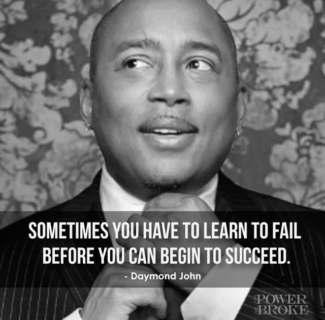
“The common misunderstanding is that we made FUBU for people of color. We made it for a culture.”
“The first places to really buy FUBU were in Japan and the skateboarders in Seattle. Then it really took off.”
“Any market starts off as what they call ‘niche’.”
“Most brands who started something started with a spark.”
“Think about the dilemma the man who invented the fax had in selling it.”
“In ’08 most of us were starting to feel the pinch, 8 of my clothing companies weren’t working.”
“When I first got called to do Shark Tank I said no because I had to spend my own money.”
“My strength is creating a lifestyle. I also know distribution.”
“I was only getting pitched apparel because people tried to put me in a box.”
“If you look at all the jobs I had and all the businesses I started, I was taking the jobs home with me. I was thinking about being a waiter again.”

“I was starting companies for the wrong reason—I only wanted money.”
“We’re in the day and age of social media. By the time 3 minutes pass you’ve got the girl, the car, everything you want on Instagram.”
“They don’t see Michael Jordan cut from teams, they think you just wake up and crush it.”
“$6 billion in the fashion industry over 20 years is alright.”
“We vet the people after the show. The pitches can last up to 2 hours.”
“The first season I lost about $750,000 because I didn’t have the right people around me.”

LL Cool J, an early adopter of FUBU
“Social media wasn’t really around as much in the first season.”
“I made all my money back on one deal in the third season.”
“Being competitive I said to myself, ‘I’m going to figure this out.’”
“Shark Branding was initially Stealth Branding. I’m a hands-on shark. I put in a lot of work.”
“I’ve done most of the product placement you see in music videos. If you drive this, drink this, and wear this here’s the extra $100 grand to make your video.”
“Because of all the failures and experiences I’ve had in life, I can give an honest delivery in my keynote speeches.”
“I’m not going to tell you anything new, but you can’t object from hearing my story.”
“I love hearing when people have failed. It shows that they’ve grown.”
“Think of President Obama when he speaks he takes the negative out. It’s not what you say, it’s how you say it.”
“I realize what things I’m weak at. People don’t like to say they’re weak at things.”
“Barbara said she wrote a list of everything she hates and everything she loves. She tried to figure out how to grow the things she loves to create that company.”
“Anything is under $19 and is plastic, Lori can sell it. That’s her strength.”
“You have to know your strengths and weaknesses.”
“Never say that this market is THIS size. It doesn’t mean anything to anybody. It has nothing to do with your opportunity.”
“If you only talk about how much something sold for, it shows you don’t have idea on how to grow.”
“If you think you’re creating something new, you’re not. You’re creating a new delivery.”
“Walk in the room and be infectious. People want to know they can spend their time with you everyday. “
“Resonate with people with your morals.”
“Be transparent, show your failures.”
“You have to first test yourself and see if your message has value.”
“As a PAGE Ambassador we are to inspire those to be an entrepreneur, get access to capital, and show it’s possible to become an entrepreneur.”
Follow Daymond John @TheSharkDaymond
Tune into ‘Dot Complicated with Randi Zuckerberg’ every Wednesday at 12pm ET only on SiriusXM Business Channel 111
July 1, 2016
After a Fatality, What is the Future of Self-Driving Cars?
 After the May 7th fatal accident using the autopilot feature in the Tesla Model S sedan that killed Joshua Brown, the US Government has officially announced the first fatality in a wreck involving a car in self-driving mode. Federal regulators are also investigating the design and performance of the system aboard the Tesla Model S.
After the May 7th fatal accident using the autopilot feature in the Tesla Model S sedan that killed Joshua Brown, the US Government has officially announced the first fatality in a wreck involving a car in self-driving mode. Federal regulators are also investigating the design and performance of the system aboard the Tesla Model S.
So what does this mean for the future of self-driving cars? Brown himself posted a video touting the amazing capabilities of his “Tessy.” Tesla posted that its autopilot system did not recognize the white side of the tractor trailer (which turned left in front of Brown spurning the devastating chain of events) against a brightly lit sky, so its brake was never activated. Tesla also mentioned that Brown’s fatality is the first in over 130 million miles since autopilot has been activated in 2015. Now that the government is involved what can we expect in terms of progress—or delay—in self-navigation. Here’s a look at what some predict:
The federal traffic safety agency is nearing the release of a new set of guidelines and regulations regarding the testing of self-driving vehicles on public roads. They are expected to be released in July.
At a recent technology conference in Novi, Mich., the agency’s leader, Mark Rosekind, said self-driving cars should at least be twice as safe as human drivers to result in a significant reduction in roadway deaths. “We need to start with two times better,’’ Mr. Rosekind said. “We need to set a higher bar if we expect safety to actually be a benefit here.”
Karl Brauer, an analyst with the auto research firm Kelley Blue Book, said the accident served as a signal that the technology might not be as advanced and ready for the market as some proponents have suggested.
“This is a bit of a wake-up call,” Mr. Brauer said. “People who were maybe too aggressive in taking the position that we’re almost there, this technology is going to be in the market very soon, maybe need to reassess that.”
According to the Levy Journal police blotter, Brown’s Model S traveled beneath an 18-wheeler’s trailer that was making a left turn from a highway intersection with no stoplight. We don’t yet know what happened in either vehicle during the fatal crash—that’s what the National Highway Traffic Safety Administration (NHTSA) investigation wants to find out. But you can see why allowing a human to take back control of a car that has already started making a decision to avoid a crash might create a crash instead. And even if there was some kind of sensor blind spot, or a flaw in the software, or just a flat-out failure of the system, requiring the driver’s hands to remain on the steering wheel is problematic. For the system to be foolproof, it should not need—or allow—human intervention as a backup. That’s why transit leaders from 46 cities believe fully autonomous cars are the safest solution.

Which highlights another important point: We need data to prove this. Companies that are collecting this kind of crash information need to hand it over to the Department of Transportation. Just a few weeks after the crash happened, but before the investigation was made public, Tesla announced that it was doing just that. Whether the impetus for the announcement was the crash or not, it doesn’t matter much now. But this should absolutely be a requirement for everyone from Google to Uber to start saving more lives on our streets.
Last week a big study explored the ethical dilemmas of how the AI in self-driving cars make decisions, something that Google has talked about at length. But an important point was missed in that study: truly autonomous vehicles don’t exist in a vacuum. If the tractor-trailer had also been fully autonomous—heck, if both cars simply had the very basic connected vehicle tech that the NHTSA is making standard on all cars—the truck would have communicated with the Tesla long before any potential crash. This is the best evidence yet that we need to get our hands off the steering wheels as soon as possible—or get rid of the steering wheels completely.
 And a report by Business Insider which claims that 10 million self-driving cars will be on the road by 2020—published 2 weeks before the US announced its probe into autonomous driving:
And a report by Business Insider which claims that 10 million self-driving cars will be on the road by 2020—published 2 weeks before the US announced its probe into autonomous driving:
In an in-depth report from BI Intelligence, we analyze the self-driving car market by analyzing the current state of the self-driving car and provide an in-depth analysis for how we see the self-driving car progressing over the next five years. Our in-depth analysis describes the economic impact that self-driving cars can have and look at the current barriers preventing the self-driving car from coming to market.
Here are some of the key takeaways from the report:
Self-driving cars are not some futuristic auto technology; in fact there are already cars with self-driving features on the road. We define the self-driving car as any car with features that allow it to accelerate, brake, and steer a car’s course with limited or no driver interaction.
We divide the self-driving car into two different types: semi-autonomous and fully autonomous. A fully autonomous vehicle can drive from point A to point B and encounter the entire range of on-road scenarios without needing any interaction from the driver. These will debut in 2019.
By the end of the forecast period, we expect there will be nearly 10 million cars with one of our defined self-driving car features.
Fully autonomous cars are further divided into user-operated and driverless vehicles. Because of regulatory and insurance questions, user-operated fully autonomous cars will come to market within the next five years, while driverless cars will remain a long ways off.
The biggest benefits of self-driving cars are that they will help to make roads safer and people’s lives easier. In the UK, KPMG estimates that self-driving cars will lead to 2,500 fewer deaths between 2014 and 2030.
But the barriers to self-driving cars remain significant. Costs need to come down and regulations need to be clarified around certain self-driving car features before the vehicles fully take off among mainstream consumers.
In full, the report:
Explains our definition of a self-driving car and breaks down the self-driving car into five levels of possible capabilities
Sizes the current and expected self-driving car market, including shipment forecasts and expected installed base
Analyzes how both car and tech companies are approaching the self-driving car
Determines the benefits of the self-driving car
Assesses the costs and regulations preventing the self-driving car from coming to market
What do you think of the future of self-driving cars? Would you use an AI driver? Tweet us @dotcomplicated and let us know your thoughts!
June 29, 2016
Radio Recap: Startup Accelerators

For many entrepreneurs in the tech space, being a part of something larger has helped get business off the ground quicker than going at it alone—which is why more and more startups are turning to incubators and accelerators to help bridge the gap from concept to completion.
While business incubators have been around since the 1950s, this new breed of tech accelerator is becoming more and more mainstream by offering expert mentorship, resources like legal counsel and office space and, even in some cases, seed money. Today on ‘Dot Complicated with Randi Zuckerberg’ Jackie Trebilcock, the Managing Director of the New York Fashion Tech Lab, and Chike Ukaegbu, founder of StartUp52 discussed the business of tech accelerators.
“StartUp52 is the first diversity-focused accelerator in NYC.”
“If you don’t belong, you belong with us.”
“There’s a much bigger need for diversity in tech than ever thought.”
“StartUp52 has 20 startups that just started with us.”
“We had about 400 applications this round.”
“We look for a diversity profile. How diverse is the team, because diversity helps drive innovation.”
“I came from an environment that encouraged education. I was curious why this was such a disconnection for the youths in Harlem.”
“We had kids who didn’t know what ‘entrepreneur’ meant to going after VCs when the program ended.”
“This is not just a social impact game, diversity is also very profitable.”
“Women, minorities, the disabled, and veterans are all an untapped community in tech.”
“The moment you try to go too technical, you lose your audience.”
“People love numbers and successes. Talk about those.”
“We have a kickoff event that’s open to the public.”
“ Monday, Thursdays are two days focused on investors.”
“In July we have a community week where we do something for the community everyday.”
“We have a mentor who is focused on wellness. We encourage family and community and to be vulnerable with each other.”
“The tree does not make a forest. We understand the meaning of community.”
“We have 5 highschoolers and 20 college interns to alleviate some of the responsibilities for the entrepreneurs.”
“I’ve been in New York 14 years. I call Harlem home. The diversity here and richness of the people is more exciting than being out West.”
“We’ve attracted those who understand where we’re coming from—a community that understands itself.”
“Success for us is making sure the founders succeed and get what they need.”
“It’s important to find the right person who understands the community and empower them to do what they need to do.”
“I spent 5 years learning how to build something but no one taught me how to monetize that.”
“Finding a mentor is extremely important. Make sure there’s an organic relationship first.”
DISCOMELEE—“Entrepreneurship isn’t for the faint of heart. It takes a special person to go through that gauntlet.”
“You walk into investor meetings and say ‘video game’ they oftentimes say no.”
“Building your team is the hardest, but most important, part.”
“It’s important to increase your pool of advisors and mentors. It’s important to find an accelerator that works for you.”
QUARTOLIO—“I was exposed to information that I didn’t have.”
“Stay connected and stay informed. Reach back to others and let people know they exist.”
“We have fashion retail partners to work with us.”
“We work with only women for this program. We were founded by Springboard Enterprises, headed by Kay Koplovitz.”
“We have two wearable companies, 3D knitting—it’s quite diverse.”
“We have a database of many tech & fashion startups.”
“Our fashion retail partners are part of the acceptance process.”
“We’re always keeping in touch with the startups that didn’t make the cut. It might have just been the wrong time.”
“I’m very entrepreneurial and have a few startups in the fashion industry.”
“Demo Day is what our lab companies work towards. It’s a product pitch.”
“Startups get 6 minutes to pitch their product on Demo Day.”
“Hone the pitch and know your audience. How do you tell the story without too much text?”
“Day 1 we start off with orientation about what the founders can expect and how they can forge relationships with our retail partners.”
“We’re not all meeting in the same space every day.”
“We have a framework of curriculum.”
“We were founded to be able to give designers access to the fashion industry. We have a direct line of communication to retailers.”
“We’re there for each of the entrepreneurs and are there to help them.”
“NY Fashion Tech Lab was founded in 2014. Now there’s a lot less resistance to fashion and tech.”
“If there is a fashion or retail brand that not’s based in NYC, they have an office here.”
“Two of our founders from the Lab have been acquired.”
“A lot of our companies are B2B but some are B2C.”
“We have a large pool of mentors we match our founders to. It’s not an exact science, it takes a lot of time to find the right one.”
Join ‘Dot Complicated with Randi Zuckerberg’ next Wednesday, July 6th when CEO of FUBU and co-star of Shark Tank, Daymond John joins the show. Only on SiriusXM Business Channel 111 at 12pm ET/9am PT.
June 24, 2016
How Brexit Will Affect the Tech World
 Now that the UK has officially voted to leave the European Union with a near 50/50 vote on Brexit, the major players in the tech sector of Britain are speaking out about the impending leave.
Now that the UK has officially voted to leave the European Union with a near 50/50 vote on Brexit, the major players in the tech sector of Britain are speaking out about the impending leave.
Since much of the UK’s technology industry is in London—a city that greatly benefitted from the EU—the smaller towns that do not reap the benefits of hi-tech capital were the ones who ultimately made the decision, leaving UK geeks fearing for jobs, investments, and advancements. Here’s what the Brits are saying about the impact Brexit will have on tech:
More than half (55.6 percent) agree that UK tech benefits from the EU, compared to a third (33.9 percent) who disagreed. A further 10.5 percent said they didn’t know.
Overall, the industry is overwhelmingly in favour of the UK’s continued membership of the EU.
Research from industry body techUK suggests 70 percent of its members want to stay in the EU, 15 percent want to leave and 15 percent don’t know.
The majority support the UK’s membership because it makes the country more attractive to international investment, makes the UK more globally competitive and gives it a more favourable trading relationship with other members.
Industry body Tech London Advocates found 87 percent of its members wanted the UK to remain a while another ten percent declined to give their view on the matter. This meant just three percent advocated a ‘leave’ vote.
The CEOs of BT and Virgin Media have suggested broadband infrastructure investmet could be at risk in the event of a Brexit and earlier this week, the UK heads of IBM, Microsoft and SAP were among 34 to have signed an open letter urging the UK to vote ‘remain’.
Tech is big business for the United Kingdom. The UK’s IT industry is worth £58 billion to the economy annually. London-based tech firms alone raised £1.09 billion in venture capital last year. There are 42.4 million smartphone users in the UK, and that’s steadily rising. We’re the world’s fifth biggest economy, and technology and science make up a big part of that.
Leaving the EU will have consequences for every sector, and technology is no exception. No one can say for certain what will happen when (presumably) leave, however Norway – who chose not to enter the EU in 1994 and was often cited as an example by pro-Brexit campaigners – delivered a warning that being alone is not all fun and games.
Of course the politicians can be wrong, the experts can be wrong, and the business leaders can be wrong – this is new territory. They can also be right, and some of the world’s most influential technologists have been quite vocal about the EU referendum.
Bill Gates said that a post-Brexit Britain would be a “significantly less attractive place to do business and invest”. He added:
“While ultimately a matter for the British people to decide, it is clear to me that if Britain chooses to be outside of Europe…it will be harder to find and recruit the best talent from across the continent; talent which, in turn, creates jobs for people in the UK.”
And Chris Kenyon, the Senior Vice President at Canonical – the British minds behind the Ubuntu operating system – said:
“Canonical supports the Remain campaign, and believes the UK will fare better, socially and economically, inside the European Union. Employment conditions, safety standards, scientific advancement and economic vibrancy all improve with access to larger pools of talent and customers.”
Kenyon added that the UK has a “special deal” with Europe, that is “a better deal than any other country will ever obtain, or that the UK could ever attain again”.
The technology industry’s Leave camp is a little smaller, granted. Nevertheless, important industry leaders have spoken out in favour of a Brexit vote, including: Sir James Dyson (Founder of Dyson), John Caudwell (Founder of Phones4u), Lord Kalms (Former Chairman of Dixons Retail), and even Julian Assange (Creator of Wikileaks).
Speaking to the Daily Telegraph, Sir James Dyson said that the UK would “create more wealth and more jobs by being outside the EU than we will within it”.
“When the Remain campaign tells us no-one will trade with us if we leave the EU, sorry, it’s absolute cobblers. Our trade imbalance with Europe is running at £9 billion a month and rising. If this trend continues, that is £100 billion a year.”
And just how will the British startup companies fare?
London’s tech sector relies heavily on being able to hire talented software engineers from the European Union, and Eastern Europe in particular, but that could change with the country’s departure from the EU. The question is by how much, since the U.K. government has yet to begin negotiations with the Union about leaving.
The British government, now destined to be run by a new prime minister, may try to negotiate remaining in the EU single market, despite leaving the bloc, as Norway, Switzerland and Iceland have done. (The single market mandates the free movement of people, goods and services inside the EU.) But even that outcome is unclear: Germany’s finance minister, Wolfgang Schauble, has said the tactic won’t work.
Ultimately, London will have to work harder than it did before to market itself to potential technology hires overseas.
“You have to overcompensate, and prove the point that we do recognize the value of being an open trading country,” says Hoberman. It’s possible, for instance, that Britain could install an skill-based immigration point system like the one used in Australia.
“That’s a message we certainly didn’t hear in the campaign from Leave, but let’s hope that’s the message they come out with, that we were too biased [towards] the EU so let’s trade with the whole world,” he says. “There are messages put across that can be more positive.”
If it does become harder for start-ups here to hire people from inside the EU, they’re being advised to consider opening offices in places like Berlin, Eastern Europe and elsewhere in the European bloc. That’s what Damian Kimmelman, the American founder of corporate intelligence startup DueDil in London, is already planning to do.
“We’re going to be opening up new offices,” he says, adding that over the next few weeks he and his team will be coming up with a game plan. “We have to. We’re scaling far too quickly to jeopardize our ability to scale because we have to hire people in the U.K.”
Hoberman and Kimmelman both agree that managing staff overseas is harder than having them all together in a single place like London, but the silver lining for Kimmelman is that this could help create a different outlook for his firm.
“From today onwards we are an international company,” he says. “We’re not a British one.”
What do you think of Brexit and its effect on technology in the UK? Tweet me @DotComplicated !
June 22, 2016
Radio Recap: Making a Living Through the Words of Others

Content analysis blog, Pricenomics, claims the Internet is now overrun by poorly managed content mills. Content mills—or farms as they’re sometimes called—employ droves of freelance writers to generate original, SEO-packed content specifically designed to reach maximum readability and share-ability potential by automated search engines. Mill content may be annoying for readers looking for more thorough investigations on a subject, but it’s fantastic for aspiring writers looking to break into the game. But now that Google recently starting blocking junk-content and SEO-focused sites, the mill business model is going under, which means less work for writers. So how can writers find work?
Today on ‘Dot Complicated with Randi Zuckerberg’ the topic of how to make a profit from other people’s words was discussed with authors Laura Morton—celebrity ghostwriter—and Kate Siegel of ‘Crazy Jewish Mom’. Along with us is Kate’s infamous mother, Kim Friedman.
“My name is on almost every book I’ve written. If you want my name off the book, it costs more.”
“I was in TV production paying people to write scripts. They were terrible. I thought I could do it myself.”
“I pioneered the celebrity exercise video market. I did a lot of work with Richard Simmons and Muhammad Ali.”
“I’ve always had a knack for interviewing. It was always about great story.”
“I did Joan Lunden’s workout video. After she went through her divorce I told her to write a book. It was my first.”
“If you wanted to reach a celebrity at that time you had to write them a letter. Andy Cohen wrote a letter to Susan Lucci wanting to have lunch with her.”
“I’m an idea person, I’m a great storyteller and coming from production, I know how to put all these things together.”
“I liken it to going to summer camp. You get to know these people on such an intimate level and then they go away.”
“Sometimes they tell me I’m the most expensive therapy they’ve ever had—but also their best therapist.”
“I have to believe in the subject. The superfluous celebrity story doesn’t work for me anymore.”
“The trick is making each of those voices different. Dog the Bounty Hunter and Justin Bieber are not the same voice.”
“My skillset is to completely remove my voice.”
“I write 7 books a year.”
“Generally I can get someone’s entire story in about 25-30 hours but I don’t like to do marathon sessions.”
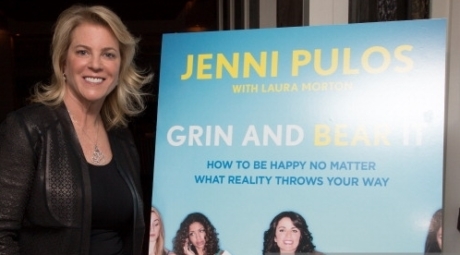
“I take people a lot deeper than a reporter. I ask the hard questions because they allow me to.”
“Any element that brings their life story off the page and makes the reader feel like they’re only talking to you.”
“Authenticity in what you’re doing in the writing is so important, even in the corporate world isn’t talked about enough.”
“Authenticity will always serve you. People get lured by the Almighty Dollar.”
“They were teaching the Girl Scouts how to spin plates. That’s what I do. Luckily my deadlines never come at the same time.”
“Any writer knows they aren’t feeling something or have writer’s block. Busy people are always busy.”
“The more you work the more work you get.”
“You’re responsible for your income. You have to make it happen.”
“I garner life lessons and cherry pick this material to now have a well so deep I can share with others.”
“I started doing a lot of speaking. There’s such great value in storytelling.”
“In my second half I feel like I have so much to do for myself. It’s like starting at Ground Zero.”
“I don’t believe in the traditional path anymore. I think publishing is predatory lending. It’s an unfair business structure.”
“Its not just content anymore—it’s context. Story first and foremost. Publishers rely on authors to do all the work.”
“The most important element is your audience.”
—
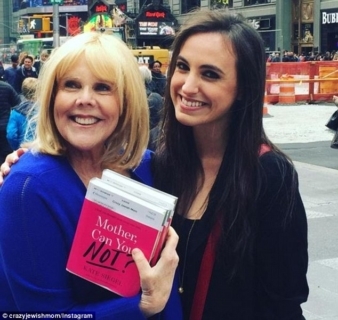
“There aren’t any professional women emojis.”
“I’ve been screenshotting the insane things my mom texts me since texting began.”
“One of my mom’s main concerns of my life is anything ovary-centric.”
“I’ve gotten good at understanding what’s going to work with my audience.”
“For content creators, social media allows you to have an audience you would’ve never had before.”
“I never thought I’d work with my mom.”
“At the beginning some of those off-brand things were paying my bills. But it’s about trust with the audience.”
“I have never worked this hard as I have with Crazy Jewish Mom.”
“’Mother Can You Not’ is about our insane adventures.”
“Mom was working directing television when there were only 2 women directing TV.”
“The book in itself is something I did establish my own voice. The stories are my stories and my experiences.”
“There are a million excuses to do anything. There’s no time like the present. Consistently write and publish.”
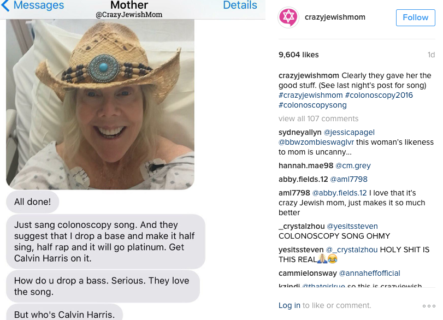
“She asked if I’d mind if she posted to her friends. I didn’t know it was 800,000 friends.”
“I was unhappy because she quit her job for Crazy Jewish Mom. I thought she should to do both.”
“Our relationship is our relationship. It was World War 3 in high school.”
“Anything you do is story. You have to tell a story.”
“One of the things I’m proud of with Kate is she is a writer. She translated my words into writing her own book.”
“I would’ve preferred her to stay in the tech building and started an app. Or being a lawyer.”
“Having struggled as a woman director it was very hard. The last thing I wanted her to do was be in entertainment.”
“I don’t care what anyone thinks of me anymore. My advise is to go with your heart and passion and be authentic.”
“Begin with who you are and what you know.”
Join ‘Dot Complicated with Randi Zuckerberg’ every Wednesday to learn about the newest in tech trends and entrepreneurship! Only on SiriusXM Business Channel 111 at 12pm ET/9am PT!
June 17, 2016
Congrats to Dot Complicated Essay Contest Winner: Adam Welcome “Being A Digital Dad”
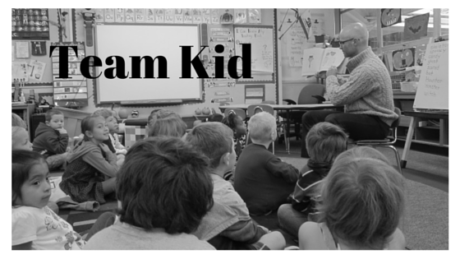
Congratulations to Adam Welcome! Read his winning essay below!
“Dad, you’re on your phone a lot lately, probably too much actually”
My five year old daughter doesn’t miss a beat, she can tell I’ve been overly wired lately and I haven’t been as sly with my digital life the past couple weeks. Her and my three year old son aren’t shy about keeping me in check!
Maintaining digital balance as a dad is super hard and yet so important!
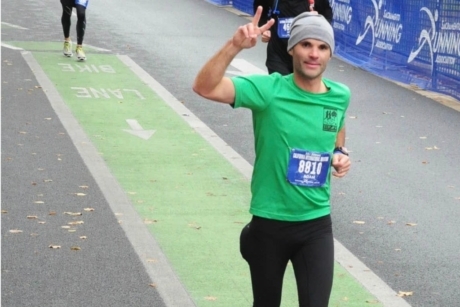 I’m a husband – a father – I run three marathons a year – just wrote a book – just finished my sixth year as an Elementary Principal and am very connected to our digital world. How are we supposed to balance it all, stay sane and be a model for our kids?
I’m a husband – a father – I run three marathons a year – just wrote a book – just finished my sixth year as an Elementary Principal and am very connected to our digital world. How are we supposed to balance it all, stay sane and be a model for our kids?
It’s also really important to be honest with my kids. After my daughter made the comment I talked with her and my son about why I’ve been on my phone much more lately. The release of my book has kept me busy with our social media interactions and both kids were very aware while I was even writing the book. Explaining to them that it’s not forever, this is just a busier time and pretty soon we’ll all have some recharge time with a family vacation.
First thing to remember on a daily basis is to not try and do it all. There was a time when I felt obligated to answer/respond/like every social media interaction that came my way. Letting go of that ‘obligation’ is hugely important. What’s more important is authentic interactions during your work day and when you come home to the family!
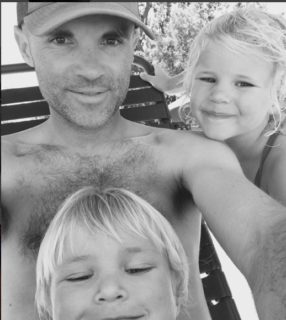 There’s nothing more important than building memories with your child. Being in the moment experiencing the ocean, playing at the park, reading books together, watching the Warriors game or even grocery shopping together.
There’s nothing more important than building memories with your child. Being in the moment experiencing the ocean, playing at the park, reading books together, watching the Warriors game or even grocery shopping together.
A few ideas that have worked for me:
– I use to turn email off on my phone when I left work each day. Now I don’t have my work email on my phone at all – talk about refreshing and I haven’t missed a thing at work! Give it a try.
– Leaving my phone at home when I go grocery shopping. Small moments of tech-free living is refreshing and allows you great conversation time about healthy eating and shopping with your kids. Even if you don’t bring your kids to the store, it’s a nice break and you’ll notice so much more in your surroundings if your phone isn’t there as a distraction.
– Put your phone in a drawer at home for a few hours, if it’s not out you can’t check it!
– Turning it completely off for an entire day twice a month – this is the best. Like turn your phone off when you wake up and don’t turn it on until you wake up again the next morning. Give it a try!
– Whenever my kids go to a birthday party at the park, I always leave the phone in my car. If you really want to bring it along for photos, put it on airplane mode so you won’t have any disruptions.
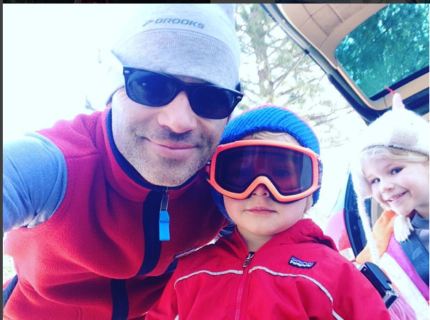 It’s also really important to compartmentalize your digital life. I’m a HUGE believer that work should happen at work. I’m at work for well over eight hours a day and when I’m home it’s family time and when the kids are in bed then it’s personal digital time. Being a ‘hard worker’ is much more sustainable and impactful than being a workaholic.
It’s also really important to compartmentalize your digital life. I’m a HUGE believer that work should happen at work. I’m at work for well over eight hours a day and when I’m home it’s family time and when the kids are in bed then it’s personal digital time. Being a ‘hard worker’ is much more sustainable and impactful than being a workaholic.
Don’t let your digital life take over, it’s easy for it to happen. Harness all the amazing that is out there with technology in our world, but please remember to enjoy a break and face to face conversation. Your kids deserve it and so do you!
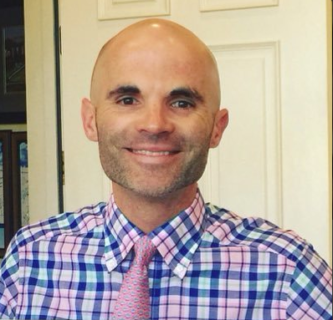 Adam has worked in public education for 14 years and just finished his sixth year as an Elementary Principal. Next year he’ll be transitioning to a new position as Director of Innovation and Technology. He has two young children (five and three) and a wonderful wife who is not only a life partner but also running buddy each week! Adam is the co-author of Kids Deserve It and blogs on a regular basis for different publications.
Adam has worked in public education for 14 years and just finished his sixth year as an Elementary Principal. Next year he’ll be transitioning to a new position as Director of Innovation and Technology. He has two young children (five and three) and a wonderful wife who is not only a life partner but also running buddy each week! Adam is the co-author of Kids Deserve It and blogs on a regular basis for different publications.
Connect with Adam:
Twitter – @awelcome
Insta – @mrwelcome
Blog – adamwelcome.blogspot.com
Book – kidsdeserveit.com
June 15, 2016
Radio Recap: Telepresence Robots
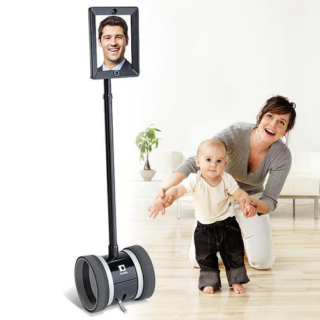 If you’ve ever seen something that looks like an iPad on a Segway, you’ve just witnessed the future. These are called telepresence robots and they’re becoming more commonplace as their mobility and connectivity add a new dimension to remote communication which is un-reproducible by smartphones or other larger, bulky teleconferencing systems.
If you’ve ever seen something that looks like an iPad on a Segway, you’ve just witnessed the future. These are called telepresence robots and they’re becoming more commonplace as their mobility and connectivity add a new dimension to remote communication which is un-reproducible by smartphones or other larger, bulky teleconferencing systems.
With telepresence robots can provide a presence when absenteeism was the only other previous alternative. From education, healthcare, business, and manufacturing, telepresence robots help people engage with others when they can’t appear personally. And the industry is only booming as the telepresence robot markets was at $825 million in 2015 and expected to reach $3 billion by 2020 and $7 billion by 2022 as this next generation of robotic devices, systems, and instruments will include grippers and cameras of all types, sensors and sophisticated navigation software.
Today on ‘Dot Complicated with Randi Zuckerberg’ RJ Wafer, head of business development at Double Robotics and Michele Kuszajewski, Assistant Director at Duke University’s Nursing School sat down to discuss the prevalence and importance of telepresence.
“Picture an iPad on a stick on a Segway that you can control from anywhere in the world. You can autonomously navigate yourself through day.”
“I’ve known Marc and David for a little while, when they asked me to come onboard I told them I wasn’t going to move to California. I’m a head on a stick in the meetings.”
“Now you can turn and look at the person who is speaking.”
“Everyone makes decisions once the meeting is over. Now you can be part of the culture of the office. “
“Around noon when everyone comes into the office, there’s my head on a stick so they can access me whenever.”
“I’ve given talks from my couch in Brooklyn to Australia at 3am.”
“In January we debuted the Double 2 which has a shock absorber.”
“It’s crucial that the Double is stable in the health care environment.”
“We have a doctor who uses his Double to do his rounds at the same time go to dinner with his family.”
“The device weighs 16 pounds and goes from about 4 feet tall to 5.”
“Education is a big part of our marketplace.”
“We have kids who are homebound with illness. With the Double they can get away from being tethered to sickness.”
“You can drive it through an iOS device or a Chrome browser.”
 “We’ve been used in museums for tours. We did a test with a British Museum and autistic kids.”
“We’ve been used in museums for tours. We did a test with a British Museum and autistic kids.”
“Tokyo Police Club just had a competition where the winner could go to the show via telepresence robot.”
“The Double is intended for indoor-use, but it’s a short learning curve to learn how to drive.”
“We had a man who’s been bedridden since he was 4 and was able to attend a conference in Vancouver that he’d never be able to otherwise.”
“He said we gave a freedom he’d never be able to have.”
“The novelty goes away quickly because you’re trying to get something done.”
“Some people put a bell around it so it can sneak up on you.”
“Some people personalize it with a shirt. We had a kid go to prom and put a feather boa around it.”
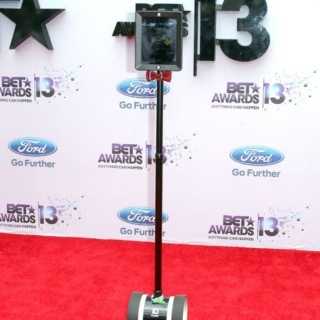
“We had two Doubles on the red carpet for BAFTA.”
“The 360-degree robot is the same base as the Double, but the head is a 360 camera.”
“The problem with VR is that you get the crew in the shot. Now you can control that camera from anywhere in the world.”
“The way that video and VR are emerging, you’ll be able to throw on goggles and go to a live event as a robot.”
“The price of entry is $3000.”
“If you find that you always need to be in two places at once, if you’re on paternity or maternity leave, the Double can do the job.”
“There are simple rules like where do you keep the robot, where does it live. You have to treat the robot as if it’s a person in the room. Give it their own area.”
“No closing doors, we don’t have arms. We can’t get up and down stairs without help.”
“Treat the person on the robot the same as you would treat the person.”
“When we reflect back on conversations I can’t remember if I was on the robot or if I was actually there. It’s that realistic.”
“Try to get through a conference call without seeing anyone’s face—it’s impossible.”
“Our Masters program went distance-based and now uses computer-based mannequins to learn how to care for potential patients.”
“Telepresence has been used in treating health care for some time.”
“The nurse practitioner wheels into the room and helps train during the simulation.”
“It’s becoming more utilized in the healthcare world so our students are gaining confidence in using tech early on.”
“Instead of having that static Skype, the Double shows real presence.”
“Our students feel like that person really felt like part of the their team.”
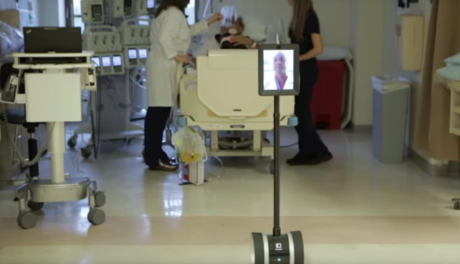 “The development of the equipment is built so it’s very engaging.”
“The development of the equipment is built so it’s very engaging.”
“We have a lot of people who need speciality treatment or consults, so telepresence will get to the people who need help.”
“We’re incorporating these technologies so they won’t be surprised by them in the workplace.”
“We have a lot of 21st Century learners who were interested in tech. The introduction of telepresence was pretty seamless.”
“We had a team member who won an award but couldn’t make it so he sent a telepresence robot.”
“You think of things that you might have to miss out on but with telepresence robots you wouldn’t have to.”
“We were training our students to do a wound assessment in an at-home visit using telepresence.”
“We incorporate our online students with our on campus students via telepresence and learn together.”
“One of my first hesitations was about losing the engagement with one another. But the students did not find it to be a distraction. It’s the mobility of the equipment.”
“The students are accepting, the transition was seamless so we’ve incorporated telepresence into our education.”
Join ‘Dot Complicated with Randi Zuckerberg’ every Wednesday at 12pm ET to hear all the latest in tech news and trends! Only on SiriusXM Business Channel 111!
June 10, 2016
Gearing Up for 2016’s Tony Awards
 This year’s 70th Annual Tony Awards are happening LIVE this Sunday, June 12th at 8pm ET on CBS. Hosted by late night talk show host and Tony Award winner for his work in One Man, Two Guvnors, James Corden, this year’s Tonys will be Livestreamed complete with redcarpet / backstage show, hosted by yours truly—Randi Zuckerberg!
This year’s 70th Annual Tony Awards are happening LIVE this Sunday, June 12th at 8pm ET on CBS. Hosted by late night talk show host and Tony Award winner for his work in One Man, Two Guvnors, James Corden, this year’s Tonys will be Livestreamed complete with redcarpet / backstage show, hosted by yours truly—Randi Zuckerberg!
But before this year’s Tonys takes place, here’s a bit of a backstory for those both new and not-so-new to the history of theater’s biggest annual event!

The 2016 Broadway season had 39 new productions — 16 musicals (11 new, five revivals), 20 plays (9 new, 11 revivals) and three specials
Despite the hot ‘Hamilton’ ticket The average paid admission went down from $104.18 to $103.11—the first decrease ever in recorded history
Though the Broadway audience topped the professional sports team attendance in NYC and New Jersey combined, going up 15.1% in just three seasons !!
According to the Broadway League—a trade association for the Broadway theater industry— the box office for the 2015-2016 season tallied $1,373,253,725, up 0.6 percent from $1,365,232,182 last year
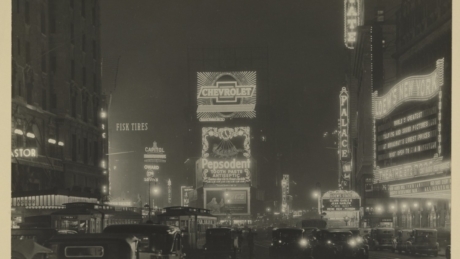
A Broadway theater is defined by terms of its size, not geographical location
Out of the 40 Broadway theaters only 4 are actually ON Broadway Avenue
Dubbed the Great White Way in the early nineteen hundreds when the quick-to-burn-out colored bulbs on the electric marquis were replaced with white lights that lit up the night sky

The longest-running Broadway production started in 1988 and has no end date in site, Andrew Lloyd Webber’s Phantom of the Opera celebrated its 28th anniversary in 2016
Plays and musicals are produced for Broadway with no run time—as long as they stay popular bring in money to satisfy investors and they’ll continue to run
Broadway is at its highest attendance and most profitable revenue yet, seeing five times the money and 3 times the productions compared to 30 years ago

And we can’t forget the Tony Awards, theater’s equivalent of the Oscars!
The Tony’s, originally called the Antoinette Perry Award for Excellence in Theater, was named for actress, director, producer and co-founder of the American Theater Wing who passed away in 1946
The first Tony Awards began a year after her death
No statue was handed out to winners. Instead men received money clips and women won a 14-carat gold compact
Smash hit ‘Hamilton’ is nominated for a record-breaking 16 nominations

Make sure to tune into the 70th Annual Tony Awards this Sunday, June 12th started at 7pm ET on the red carpet with Randi Zuckerberg!

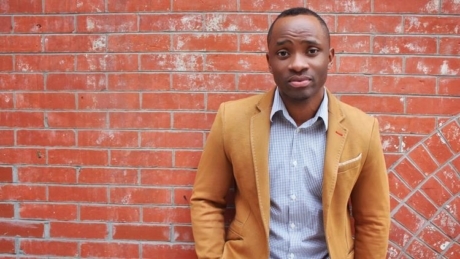 CHIKE UKAEGBO
CHIKE UKAEGBO

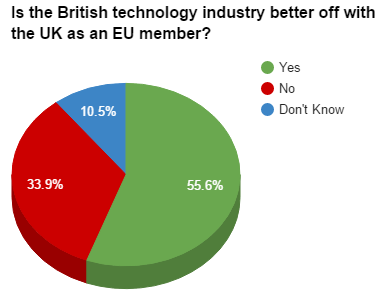 FROM TECHWEEK EUROPE:
FROM TECHWEEK EUROPE:
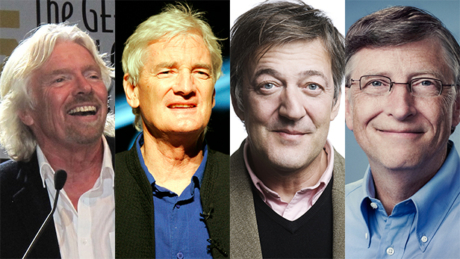 FROM TRUSTED REVIEWS:
FROM TRUSTED REVIEWS:
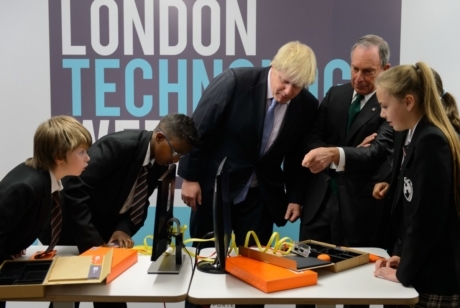 FROM FORBES:
FROM FORBES:
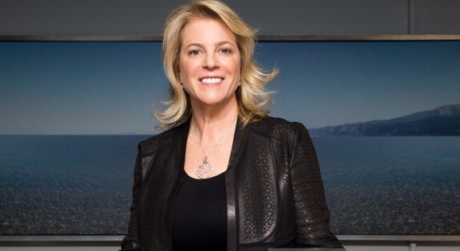
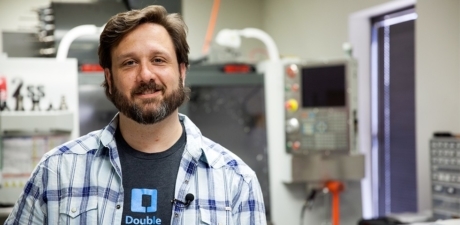 RJ WAFER
RJ WAFER



